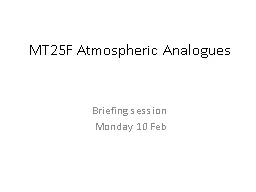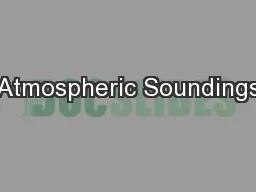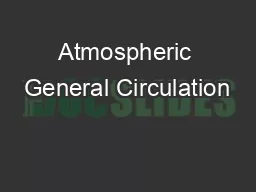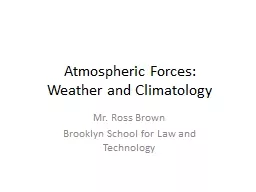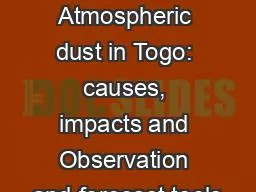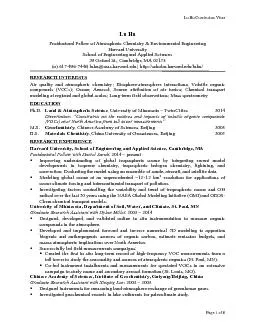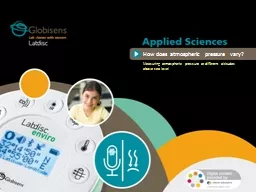PPT-MT25F Atmospheric Analogues
Author : lois-ondreau | Published Date : 2016-09-08
Briefing session Monday 2 Feb Overview This is a lab course and the purpose is twofold i t is a complement to the fluid mechanics you learn in MT24A Atmospheric
Presentation Embed Code
Download Presentation
Download Presentation The PPT/PDF document "MT25F Atmospheric Analogues" is the property of its rightful owner. Permission is granted to download and print the materials on this website for personal, non-commercial use only, and to display it on your personal computer provided you do not modify the materials and that you retain all copyright notices contained in the materials. By downloading content from our website, you accept the terms of this agreement.
MT25F Atmospheric Analogues: Transcript
Download Rules Of Document
"MT25F Atmospheric Analogues"The content belongs to its owner. You may download and print it for personal use, without modification, and keep all copyright notices. By downloading, you agree to these terms.
Related Documents

